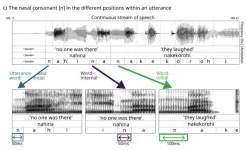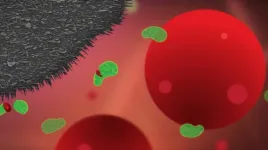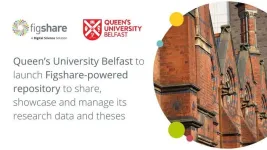KEY TAKEAWAYS
Brigham researchers analyzed 193 patients from the Vietnam Head Injury Study with penetrating traumatic brain injury to determine if the location of shrapnel damage to their brains influenced risk of developing PTSD. Damage to areas connected to the amygdala was associated with a lower chance of developing PTSD. The study suggests lesions that could protect against PTSD map to a specific brain circuit connected to the amygdala and the medial prefrontal cortex. A new study led by researchers at Brigham and Women’s Hospital, a founding member of the Mass General Brigham healthcare system, suggests that using neurostimulation therapies on a specific brain network could treat post traumatic stress disorder (PTSD) in veterans. By evaluating 193 participants in the Vietnam Head Injury Study with penetrating traumatic brain injury, the team found those with damage connected to their amygdala, the fear center of the brain, were less likely to develop PTSD. Their results are published in Nature Neuroscience.
“This is a very real brain disease, and we can localize it to certain brain circuits,” said corresponding author Shan Siddiqi, MD, a psychiatrist in the Brigham’s Center for Brain Circuit Therapeutics and an assistant professor of Psychiatry at Harvard Medical School. “Unfortunately, people sometimes assume PTSD has to do with how mentally strong or weak a person is, but it has nothing to do with moral character.”
Siddiqi collaborated with other researchers from the Brigham’s Center for Brain Circuit Therapeutics, as well as investigators from the Feinberg School of Medicine at Northwestern University, Brown University Alpert School of Medicine, and Duke University School of Medicine. He said previous studies have shown people with damage to the amygdala are less likely to get PTSD, but the team wanted to find a therapeutic target for the disease.
“The amygdala is deep in the brain, making it hard to hit precisely with a stimulation modality without doing surgery,” Siddiqi said.
Researchers in the Center for Brain Circuit Therapeutics have previously uncovered networks to successfully treat depression and addiction using transcranial magnetic stimulation (TMS). Michael Fox, MD, PhD, a co-author on the Nature Neuroscience paper and director of the Center for Brain Circuit Therapeutics, said they hoped to build on their success by identifying targets for conditions such as PTSD.
“One of the big gaps for developing a brain stimulation treatment for PTSD is identifying the correct therapeutic target,” Fox said.
Fox said previous trials have tried to use the same circuit his team derived for depression, but this target has failed in trials for PTSD.
“Rather than continue with a trial-and-error approach of testing different targets, we turned to brain lesions to map out the circuit,” he said.
The team examined 193 patients with penetrating traumatic brain injuries from the Vietnam Head Injury Study led by co-author, Jordan Grafman, PhD, at Northwestern. They looked at whether those veterans developed PTSD 20 years after the war in Vietnam.
“Some of these veterans who got shrapnel in their head went on to develop PTSD, but many of them did not,” Fox said. “The patients actually developed PTSD less than other veterans who did not get damage to their brain.”
Fox said the data Grafman gathered was key for this study because he had mapped the exact location of damage in each patient and what the neurological effects of the damage were.
Researchers then hypothesized that a circuit must exist that, when damaged, protects against PTSD. They used their wiring diagram, the human connectome, to map where brain damage had occurred and where each lesion connected. From there, they compared the data to 180 veterans who did not have brain damage, some of whom have PTSD and some whom do not. They found connectivity within the circuit correlated with whether they had PTSD or not. Finally, the team looked at whether this circuit would be a good target for treatment by examining previous trials using TMS for PTSD.
“The trials where stimulation was hitting the circuit we identified tended to be the trials that had good outcomes in patients,” Fox said. “We also asked whether or not our results could inform how to stimulate the targets, leading to what we believe is a therapeutic target for treatment using TMS.”
During the study, a patient with severe PTSD requested TMS at Acacia Mental Health in California, and Siddiqi was consulted to help plan the treatment. After a careful informed consent process, clinicians at Acacia used the circuit found in the study to treat the patient, ultimately improving his symptoms.
Fox said while it’s only one patient, the case provides an illustration for how the results of the study might translate into a clinical setting. Before it can be accessible to a larger population, they will have to conduct a randomized controlled trial targeting the circuit to gain FDA approval.
Siddiqi said one limitation to the study is they don’t yet know how the treatment results could change if a person is in a state of PTSD-induced fear at the time of treatment compared to relaxation. Fox added the study included only veterans, so they are unsure if PTSD in non-veterans would map onto the same circuit.
“While more work remains to be done, we’ve taken an important step here to identify a therapeutic target for a condition in patients who desperately need better treatments,” Fox said.
Authorship: In addition to Siddiqi and Fox, Mass General Brigham authors include Michael Ferguson and Stephan Palm. Additional authors include Noah Philip, David Carreon, Amanda Arulpragasam, Jennifer Barredo, Heather Bouchard, Jordan Grafman, and Rajendra Morey.
Disclosures: Siddiqi is an owner of intellectual property involving the use of individualized resting-state network mapping to target TMS, which was filed in 2016, has yielded no royalties, and does not cover the present work. Siddiqi is also a scientific consultant for Magnus Medical, received investigator-initiated research funding from Neuronetics (2019) and Brainsway (2022), received speaking fees from Brainsway (2021) and Otsuka (for PsychU.org, 2021)), shareholder in Brainsway (publicly traded) and Magnus Medical (not publicly traded). None of these entities were directly involved in the present work. Fox is a scientific consultant for Magnus Medical. Fox also owns independent intellectual property involving the use of functional connectivity to target TMS for depression, which was filed in 2013, has yielded no royalties, and does not cover the present work. Philip received clinical trial support (through VA contracts) from Wave Neuroscience and Neurolief, and serves on the scientific advisory board for Pulvinar Neuro.
Funding: This work was funded by the United States National Institutes of Health (K23MH121657, R21MH126271), Brain and Behavior Research Foundation Young Investigator Grant, Baszucki Brain Research Fund, and Department of Veterans Affairs (I01CX002293). Fox’s work is funded by the Nancy Lurie Marks Foundation, the Kaye Family Research Endowment, Baszucki Brain Research Fund, and the NIH (R01MH113929, R21MH126271, R56AG069086, R01MH115949, and R01AG060987). Philip’s work is funded by I21 RX002032, I50 RX002864, U01 MH123427, and P20 GM130452.
Paper cited: Siddiqi S. et al. “Potential neuromodulation target for PTSD in Veterans derived from focal brain lesions.” Nature Neuroscience. DOI: 10.1038/s41593-024-01772-7
###
About Mass General Brigham
Mass General Brigham is an integrated academic health care system, uniting great minds to solve the hardest problems in medicine for our communities and the world. Mass General Brigham connects a full continuum of care across a system of academic medical centers, community and specialty hospitals, a health insurance plan, physician networks, community health centers, home care, and long-term care services. Mass General Brigham is a nonprofit organization committed to patient care, research, teaching, and service to the community. In addition, Mass General Brigham is one of the nation’s leading biomedical research organizations with several Harvard Medical School teaching hospitals. For more information, please visit massgeneralbrigham.org.
END




